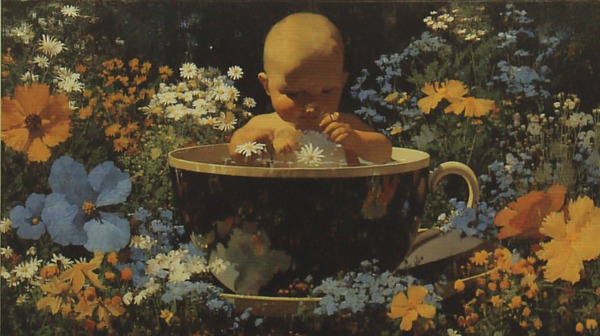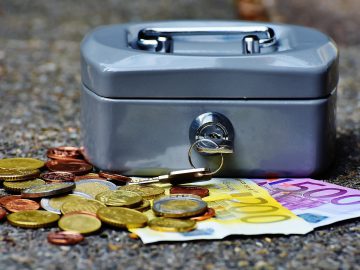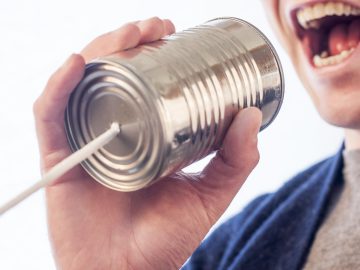Introduction
Imagine this: You’re digging through a box in grandma’s attic. There’s no treasure map. No secret will. Just a stack of old postcards. Curly handwriting. Muted roses. A picture of a bird staring into your soul. You squint and mutter, “Why would anyone want this?”
And then BAM – you see the exact same card on Etsy listed for $49.95.
PLUS SHIPPING.
Welcome to the world of Victorian postcard reselling – a glorious, quirky little niche where aged paper pays rent and nostalgia becomes currency.
These cards? They’re time machines. Portable art. Little emotion bombs soaked in Edwardian mystery. Some have real historical value. Others are just so weird and charming that collectors can’t resist. Either way – they sell. Sometimes for $5, sometimes for $500.
The beauty of this niche is that it’s cheap to enter and ripe for flipping. You can often find postcards for under $1 at estate sales, flea markets, or dusty online bundles. And if you learn what makes certain ones valuable – BOOM – you’re suddenly flipping paper for profit like a genteel time-traveling eBay hustler.
In this report, you’ll learn how to spot treasure from trash, how to build a following, where to sell, what to write, and how to turn Aunt Mabel’s weird New Year’s card from 1908 into actual money.
Ready for the adventure? It’s about to get elegantly profitable.
How to Get Started
Step one? Start looking at Victorian postcards online. Type in “1900s postcard” on eBay, Etsy, or Delcampe and just observe. Look at pricing, style, themes, and condition. You’ll quickly spot what sells: holidays, animals, angels, creepy babies in top hats – you’ll see it all.
Step two: Hit your local thrift shops, antique malls, estate sales, and flea markets. Postcards are often buried in bins labeled “$1 each.” This is where you do your Indiana Jones work. Bring gloves if you’re fancy – or just prepare to sneeze through time. Flip through them looking for dates, stamps, themes, and condition.
Step three: Start small. Buy a handful of cards that interest you – even if you’re not 100% sure they’re valuable. You’ll learn the market better by holding, researching, and pricing real cards than just Googling. Each one teaches you something.
Step four: Organize your stash. Sort by year, theme, publisher, or pure vibes. Protect your cards in acid-free sleeves or cheap top loaders to keep them in sale-ready condition. And for the love of ink, keep coffee cups FAR AWAY from the 1910 “Loving Thoughts” card with actual gold foil.
Step five: Plan your flip. Will you sell on eBay? Open an Etsy shop? Post curated lots on Instagram? You’ll learn all your options in this guide, but for now – focus on sourcing, researching, and getting cozy with your collection.
Because the faster you recognize what sells, the faster you turn papery ancestors into digital dollars.
Tools You Need
- Magnifying Glass with Light
Postcard details can be teeny-tiny. Especially when you’re trying to spot hidden publisher marks, postmarks, or microscopic copyright text. A magnifier with LED light will help you catch tiny print and see condition flaws without squinting like a suspicious squirrel. - Acid-Free Postcard Sleeves
Once you find your first banger – say, a Valentine with a steampunk cherub – you’ll want to protect it like it’s your baby. Acid-free sleeves stop fading, yellowing, and grime. Plus, they make your listings look more professional, which = more buyer trust. - Postcard Reference Books
There are actual catalogs full of what different postcard publishers, themes, and dates are worth. Grab a used copy of a Victorian postcard price guide to sharpen your instincts. It won’t always be up-to-date – but it’ll give you a sense of which names and styles hold value. - Ring Light or Natural Light Photo Setup
Postcard buyers are picky. Shadows, glare, and weird reflections? They’ll scroll right past. Good lighting helps your cards look crisp and vibrant. Bonus: makes your Instagram shots look 10x fancier with zero extra effort. - Label Maker or Card Sorting System
Once you get more than 20 postcards, your life will slowly dissolve into “where the heck did I put the Easter donkey card with the egg monocle?” Set up a labeled bin or dividers so you can find things fast. You’ll thank yourself the moment orders start rolling in.
Your 10 Step Action Plan
Step 1: Train Your Eyes to Spot the Money
Let’s be real – when you first look at Victorian postcards, it all just looks like… flowery people and haunted babies. But the more you look, the more you start seeing the gold.
“Oh, that’s embossed!” “Wait, this has a Halloween pumpkin-headed dude from 1906!”
BOOM. That’s cash. So hop on eBay or Etsy and start browsing like a postcard detective. You’re teaching your eyes to see dollar signs in crinkly corners and faded fonts.
Step 2: Buy a Little Pile of Mystery
No need to drop $200 on a giant lot of postcards that may or may not be cursed. Instead?
Grab a small bundle from eBay or a flea market bin. You want to touch them. Smell that sweet whiff of forgotten attic. Start learning what they feel like. Think of it as Postcard Bootcamp – except instead of sit-ups, you’re decoding tiny ink scribbles from 1904.
Step 3: Keep Things Organized-ish (Before It’s Too Late)
You might think, “I’ll just keep them in a shoebox for now.”
DO. NOT. FALL. FOR. THIS!
Postcards multiply like Victorian rabbits. By the time you’re 30 cards in, you’re elbow-deep in angels and angry-looking cherubs and you can’t remember which one was from Aunt Beatrice. Use sleeves. Start a spreadsheet. Give each card a nickname if you have to. (“Sassy Goose With Umbrella” stays rent-free in my head.)
Step 4: Set Up Your Fancy Little Photo Station
Trust me, lighting matters!
If your card looks like it was photographed in a haunted closet, people will scroll right past!
Open a window. Use a ring light. Lay it flat. Snap the front AND the back.
Bonus points if the back has spicy drama like “Dear cousin, I’m furious. Write soon.” Buyers LOVE that stuff!
Step 5: Pick Your Playground
Where do you want to sell? eBay is the Wild West – great for auctions and one-offs.
Etsy is the cottagecore kingdom of bundles and vibes. You can even post your finds on Instagram with captions like “Would you adopt this brooding 1911 cat-with-a-pipe postcard?”
Pick one place to start and just start. Don’t overthink. You can expand later.
Step 6: Don’t Guess Prices. Spy on Them.
Before you price that “adorable skunk in a waistcoat” card at $50, do a little recon.
Use eBay’s “sold listings” filter and see what people actually paid. It might go for $8… or $80. Either way, your pricing brain is leveling up.
And yes – some cards do go for hundreds. Especially if they involve weird holidays or unsettling rabbits.
Step 7: Make Your Listings Fun to Read
No one wants to read “Old card. Slight tear.” Snooze city.
Try this instead: “1907 postcard featuring a grumpy angel and suspiciously aggressive roses. Light wear. Extremely judgmental vibes.”
Tell the story. Mention if it’s postmarked. Highlight if the handwriting says something hilarious or heartfelt. Give your buyer a moment, not just a card.
Step 8: Group the Weirdos Together
Not every postcard is a superstar solo act. But five “sad floral funeral vibes” cards together? Instant aesthetic!
Bundle them up, name the set something charming like “Mourning Glory Collection,” and charge more.
Bundles = better shipping margins and buyers feel like they’re getting a curated treat. You’re basically the personal shopper of historical paper.
Step 9: Start Building a Tiny Fan Club
Here’s a sneaky move: build a list!
And what can you send?
Offer a “Top 10 Valuable Postcards” PDF or “Free Victorian Snark Sampler” in exchange for emails.
Then? Let ‘em know when new cards drop.
“This week’s arrivals: angry rabbits, gothic tulips, and one VERY questionable Santa.” Fans love feeling first in line. And email = income that’s not at the mercy of algorithm gremlins.
Step 10: Inject Some Personality and Let It Grow
Want to stand out in a sea of “antique paper for sale”?
Be a brand. Add humor. Tell stories!
Make people care about the angry ferret in a waistcoat. Use your unique voice. It turns your business from “a pile of old cards” into “a delightfully weird shop I can’t stop browsing.”
That’s how loyal customers – and profits – start stacking up.
5 Awesome Tips
- Photograph your postcards like they’re celebrities:
Lighting and angles matter more than you’d think. Seriously.Pretend… you’re shooting a headshot for a time-traveling pop star. Clean background. Natural light or a ring light. Always front and back. Show off that spicy 1909 handwriting.
Buyers LOVE the drama!
- Use themes to make boring cards shine:
A random card of “woman with bird” might be meh.But package it as “Bird Lady Aesthetic: Early 1900s Weird Elegance,” and suddenly… it’s ✨artsy✨. Give even the bland ones a place in your curated world. Weird sells. Always.
- Write listings like mini love letters (or passive-aggressive tea):
Ditch the dull descriptions!Write things like, “Behold: a cherub staring deeply into your soul while holding what may be a goose. 1907. Minor wear. Maximum judgment.” Your customers will laugh – and then they’ll buy.
- Create your own collector’s club energy:
People love feeling like they’ve “discovered” a hidden vintage wizard. Post sneak peeks!Offer bundle deals. Let folks DM you for first dibs. You’re not just selling – you’re building a lil’ ephemera empire with secret handshakes and aged ink.
- Reward the weirdos who love what you do:
Someone buys 3 cabbage children cards? Send them a bonus baby-for-sale card! Add a thank-you note with Victorian-style language like “I remain your humble servant.”Make it fun! Make it memorable! Make it collectible!
They’ll come back for more.
5 Powerful Takeaways
- Victorian postcards are affordable, collectible, and flipping HOT
You can buy them for pennies and sell them for dollars – especially if you understand what makes a card valuable. That’s wild ROI for something that fits in a shoebox. - The weirdest cards are often the most profitable
Cats in hats. Babies in boats. Pumpkins with faces. The stranger the vibe, the faster they sell. Lean into the odd. The market ADORES it. - Storytelling turns simple paper into must-have magic
Boring listings don’t sell. Funny, cozy, curious, mysterious ones? Cha-ching. Give every card a little lore. Buyers want to feel something, even if it’s confusion wrapped in nostalgia. - There are collectors, crafters, and designers all waiting for you
This isn’t just for antique nerds. Junk journalers, history buffs, gift buyers – they’re all out there. Speak to their interests and your audience widens faster than a bonnet in the wind. - You’re not just selling paper. You’re selling the past.
And that, my friend, is powerful. You’re offering a tiny, time-traveling thrill in a world where everything is screens and stress. That’s worth something. That’s worth a lot.
Your Next Steps
First, get your hands on a few actual postcards. Doesn’t matter where – just find a small lot, flip through them, and start feeling the niche. Look up sold listings. Check for hallmarks.
Let your brain start making those “hey this one looks valuable” sparks!
That’s the first sign of a budding postcard hustler.
Second, create a system that lets you grow without chaos. Maybe it’s a labeled bin. Maybe it’s a Notion board. Maybe it’s just a shoebox with aggressive Post-It notes.
Whatever it is – make sure you can find “Witchy Cat 1905” without digging for 3 hours. Systems = scaling.
Third, list your first card. Not perfect? Who cares!
Pick one. Write a silly/fun/heartfelt description. Snap the pics. Post it on eBay, Etsy, or wherever you want to play.
Then… do it again.
And again!
This is how the pile of paper becomes profit. This is how you win.
Conclusion
Here’s the secret: this niche isn’t just profitable – it’s ridiculously fun. You’re making money from history. From tiny works of art. From forgotten giggles and handwritten jabs and Easter bunnies wearing monocles.
You don’t need a warehouse. You don’t need a degree. You don’t need a single tech bro platform or an AI robot wearing a bowler hat.
You just need curiosity, a little storytelling spark, and a willingness to dive into bins and boxes with purpose.
Because somewhere in someone’s attic is a 1909 card with a dancing onion holding a candle.
And someone else is gonna pay you $37 for it – shipping NOT included.
So go find it!
And flip it!
And laugh your way to the bank with a pocket full of postcards and a heart full of weird.
Enjoy!






